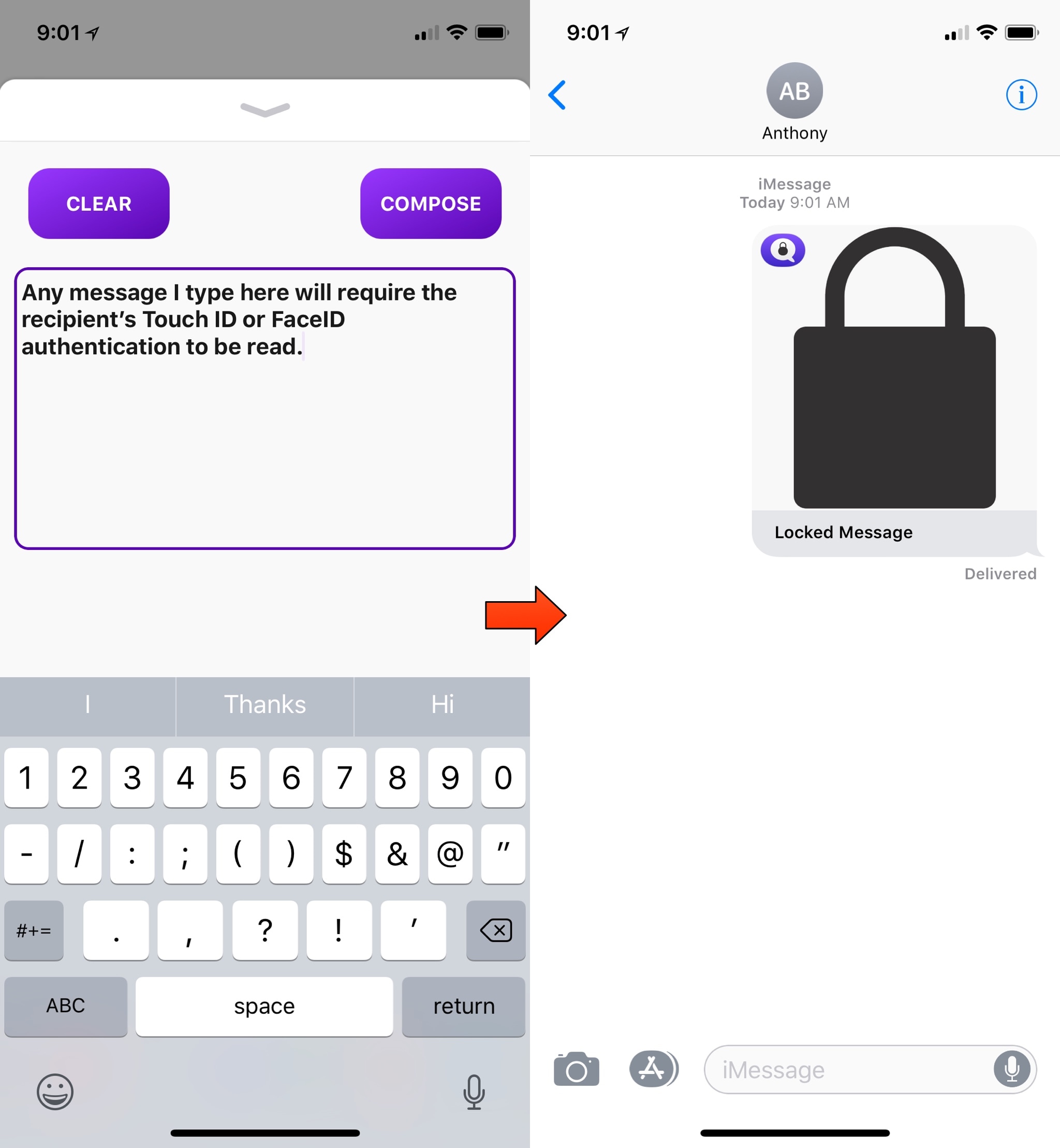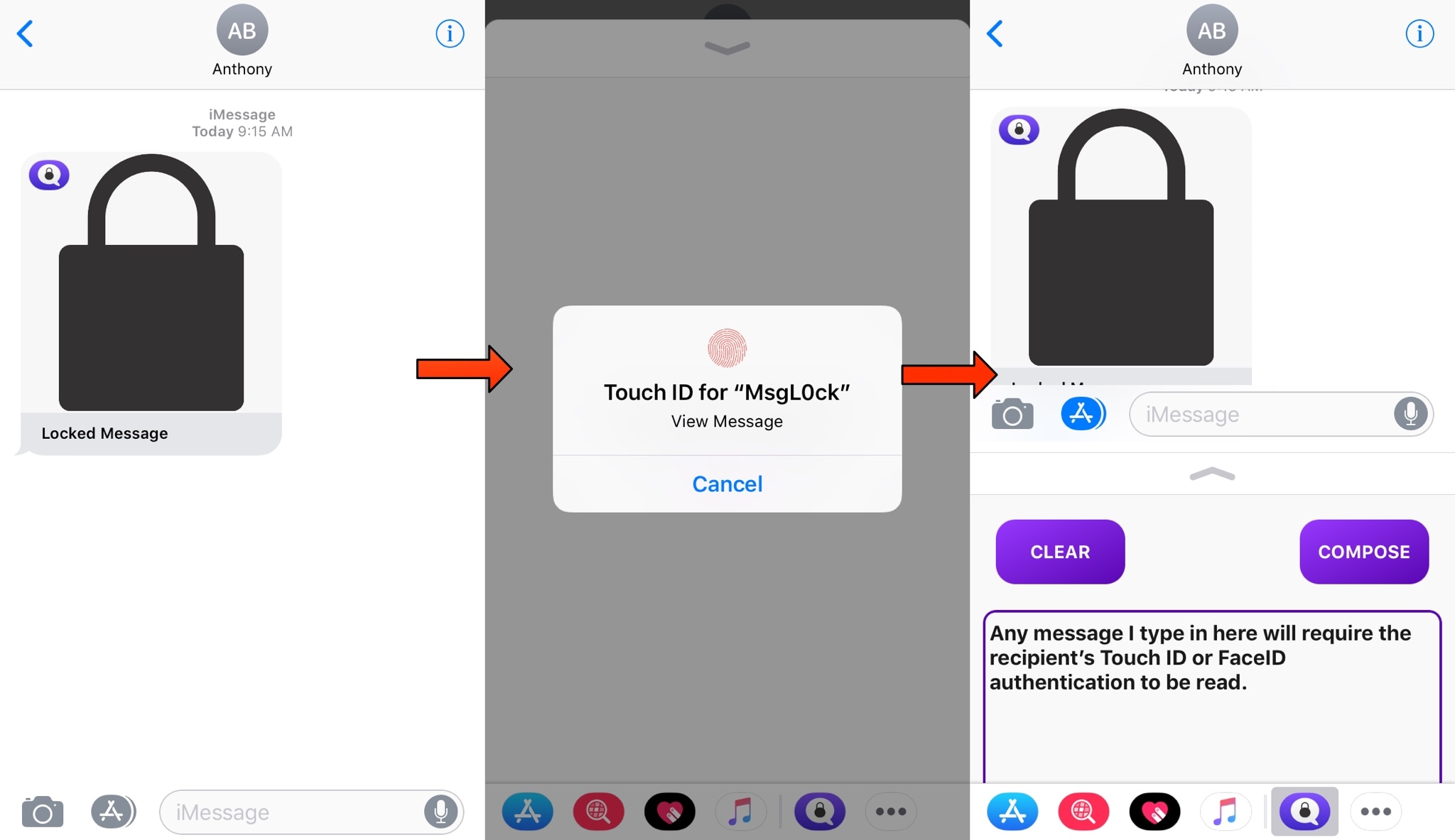
Some people take their privacy more seriously than others, and a new iMessage extension dubbed MsgL0ck by iOS developer Simon Andersson takes that sentiment into consideration.
MsgL0ck lets the sender require authentication from the iMessage recipient before they can read the message. In Apple-speak, this means providing a fingerprint for Touch ID or a facial scan for Face ID (or a passcode if the recipient has neither).
To send a locked message, just tap on the MsgL0ck extension’s icon from the Messages app’s app drawer and begin typing inside of the text field. When satisfied with your message, tap on the Compose button to send it.
The recipient then receives a preview of the MsgL0ck attachment. After they tap on it, the extension prompts them to authenticate before reading your message, like so:

One thing worth mentioning is that both the sender and recipient need to have MsgL0ck installed for the extension to work correctly. iMessage will nudge your recipient to install the extension accordingly if they don’t already have it.
Furthermore, the developer warns that MsgL0ck doesn’t encrypt your messages. Nevertheless, it makes it harder for someone to grab your iPhone out of your hand in an unlocked state and snoop at your conversation.
Although MsgL0ck might seem gimmicky for most, it all comes down to how you use your device and whether you need the additional layer of privacy. Anyone wanting to give MsgL0ck a shot can download it for free from the App Store.
You will need iOS 11.0 or later to install MsgL0ck. That said, anyone with a jailbroken iOS 10 device can use a tweak called PrivateMessage instead, as it serves nearly the same purpose.
What are your thoughts about MsgL0ck? Let us know in the comments section below!